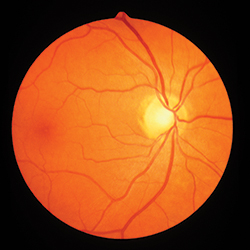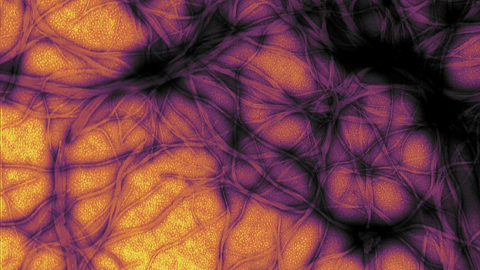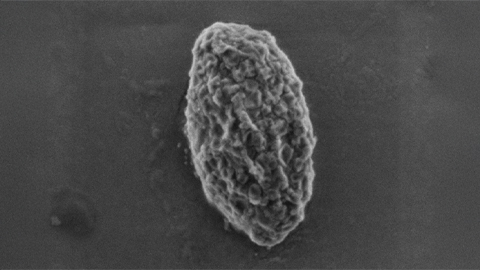JLR: Sphingolipids and retinal degeneration
Two uses for the same drug. It’s been done before with success. Take aspirin, which alleviates pain and is a blood thinner. Or Wellbutrin, which helps smokers quit and is an antidepressant. In a recently published paper in the Journal of Lipid Research, researchers took a multiple sclerosis drug called Gilenya from Novartis and gave it a new use: treatment of retinal degeneration.
 Gilenya, a multiple sclerosis drug, may have a new use as a treatment for retinal degeneration.
Gilenya, a multiple sclerosis drug, may have a new use as a treatment for retinal degeneration.
Why Gilenya? Gilenya, which also goes by the name FTY720, initially was used in multiple sclerosis, a central nervous system disorder involving the destruction of certain nerve cells. Gilenya is an altered version of a natural product and has immunosuppressive effects, particularly through the blockade of sphingolipid synthesis. This last point is key, as retinal degeneration also is known to involve sphingolipid biosynthesis.
Retinal degeneration is a catchall term for a group of diseases whose hallmark is photoreceptor cell death. This cell death has many contributing factors, one of which is ceramide, a sphingolipid whose role in retinal degeneration has been investigated by the group of Nawajes Mandal at the University of Oklahoma Health Sciences Center. In fact, in previously published work, the Mandal group identified ceramide as a critical player in retinal degeneration by using Gilenya in a rat model of light-induced retinal degeneration.
In the current JLR study, Mandal and colleagues turned their focus to a laboratory rat model, one which more frequently is used in the retinal degeneration field. This rat model closely matches how retinal degeneration happens in humans. Using this popular model gives a better idea of the effects of the drug. These transgenic animals start losing their sight at post-natal day 22 and have 50 percent photoreceptor death at postnatal day 45. This occurs because they have a mutated rhodopsin gene.
The investigators administered Gilenya to these rats at both the early and late stages of the disease and examined eye health, gene expression and sphingolipid levels. With early dosing of Gilenya came improved rod and cone function as well as lowered ceramide biosynthesis gene expression, two positive signs of improvement. In addition, the investigators noticed that the sphingolipid profile, a feature that was altered in the disease model, was reset, and they observed normal levels of associated enzymes were observed with Gilenya administration.
While Gilenya may appear to be a winner for retinal degeneration treatment, many questions remain. First, the exact pathway between ceramide biosynthesis and photoreceptor cell death needs to be established. Second, the precise mechanism of action of Gilenya also needs to be established. And, of course, many more studies with this drug in animal models have to be completed.
Still, this study makes a significant contribution to the search for retinal- degeneration drugs. Treatments for this disease are few and far between, and beginning with a Food and Drug Administration-approved drug is a good start to alleviating this disorder.
Enjoy reading ASBMB Today?
Become a member to receive the print edition four times a year and the digital edition monthly.
Learn moreGet the latest from ASBMB Today
Enter your email address, and we’ll send you a weekly email with recent articles, interviews and more.
Latest in Science
Science highlights or most popular articles

Hope for a cure hangs on research
Amid drastic proposed cuts to biomedical research, rare disease families like Hailey Adkisson’s fight for survival and hope. Without funding, science can’t “catch up” to help the patients who need it most.

Before we’ve lost what we can’t rebuild: Hope for prion disease
Sonia Vallabh and Eric Minikel, a husband-and-wife team racing to cure prion disease, helped develop ION717, an antisense oligonucleotide treatment now in clinical trials. Their mission is personal — and just getting started.

Defeating deletions and duplications
Promising therapeutics for chromosome 15 rare neurodevelopmental disorders, including Angelman syndrome, Dup15q syndrome and Prader–Willi syndrome.

Using 'nature’s mistakes' as a window into Lafora disease
After years of heartbreak, Lafora disease families are fueling glycogen storage research breakthroughs, helping develop therapies that may treat not only Lafora but other related neurological disorders.

Cracking cancer’s code through functional connections
A machine learning–derived protein cofunction network is transforming how scientists understand and uncover relationships between proteins in cancer.

Gaze into the proteomics crystal ball
The 15th International Symposium on Proteomics in the Life Sciences symposium will be held August 17–21 in Cambridge, Massachusetts.

